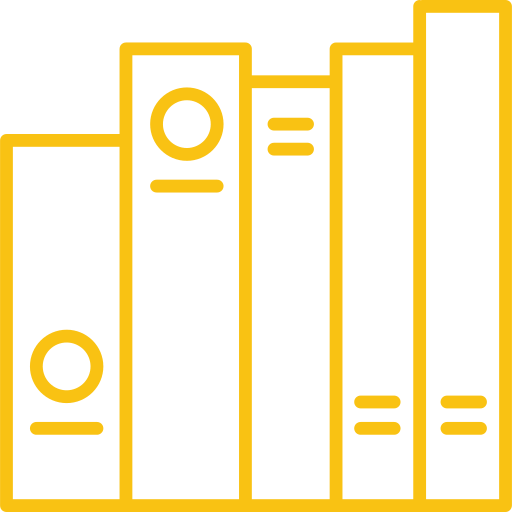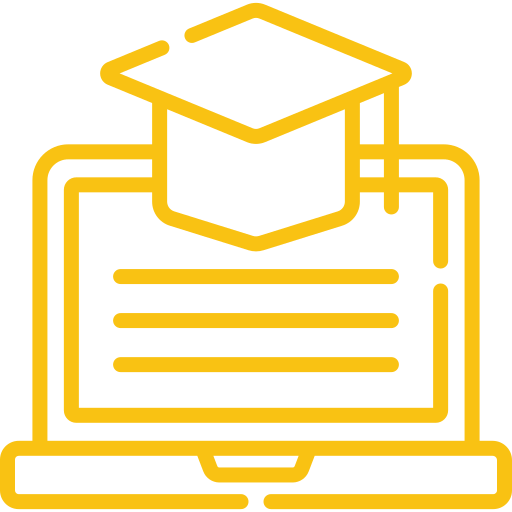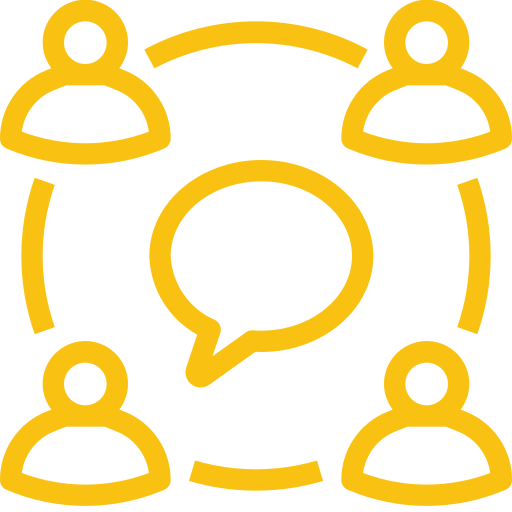Hey there, fellow educators. You’re in the classroom every day, shaping young minds and contributing to the everyday life of each school student. You know that great teaching is always growing, especially within early childhood education and extending through all grade levels. That’s why effective education for teachers is so vital for all of us.
It’s not just about getting degrees; it’s about constantly learning new ways to reach our students, particularly with technology changing so fast and the need to improve learning continuously. Good education for teachers, including specialized training in areas like special education or science education, helps us stay current and excited about our work.

The Shifting Sands of Professional Learning for Educators
Remember those old professional development days? Always led by someone who either never stepped foot in the classroom, or someone who hadn’t been in one for decades. Today, how we learn and grow as teachers, impacting areas from early childhood to secondary education, looks very different. It’s more about continuous, ongoing improvement and robust educator preparation, not just one-off events.
This constant learning is incredibly important for every school student. Think about how quickly the world changes; our students are growing up in a digital age, and we need the skills to guide them through it effectively. It isn’t just about new subjects; it’s about new ways of thinking, incorporating innovative teaching practices, new technologies, and understanding education policy shifts that affect our classrooms.

A significant portion of this new learning is self-directed too, allowing us to explore topics that genuinely matter to our classrooms, such as project-based learning or new approaches to our subjects. We can find teaching resources online and connect with other teachers from all over, empowering us to take charge of our own growth. This self-driven approach to professional development can lead to significant improvements in student engagement and learning teaching dynamics.
Some studies suggest that ongoing, job-embedded professional development, perhaps supported by a teachers college or a community college, shows more promise for improving teacher practice than short workshops. Learning incrementally, in ways that directly apply to our daily work, can be very effective. The impact factor of such continuous learning often outweighs sporadic training, helping us to better understand things like a state’s performance report and how our efforts contribute.
Embracing Technology in Your Education for Teachers
Technology in education is no longer just a supplemental tool; it’s a fundamental component that can transform how we teach and how students learn. Why should we actively incorporate more tech, from early learning settings to high school environments? Because it can make learning more engaging, personalized, and accessible for all students, fostering better student engagement.
You’re already using some of this technology; perhaps your school district actively promotes its use. Let’s look at a few key types that are shaping modern classrooms and are essential components of education for teachers.
Learning Management Systems (LMS)
Learning Management Systems, or LMS, are becoming integral to classroom operations. Think of them as your digital command center for childhood education and beyond. They help you organize assignments, share teaching resources, manage student records, and track student progress with greater ease. (In my school Google Classroom rules the roost, by far the most popular choice).
*At MTI, we use Canvas as our online LMS for classes. As you know, there are many options out there!
An LMS can save considerable time with grading and providing feedback, allowing students to often see their grades and comments promptly. Additionally, parents can sometimes log in to see how their child is doing, enhancing family partnership. This transparency is beneficial for everyone involved and can support a safe learning environment.
Research suggests that an LMS can significantly improve classroom efficiency. It allows teachers to spend less time on administrative tasks. This frees us up to focus more on teaching and student interaction, which is central to improving learning outcomes across all grade levels.
Interactive Whiteboards and Displays
Those large interactive screens at the front of the room offer more than just projection capabilities; they are pivotal for dynamic instruction. They allow you to bring lessons to life by writing on them, showing videos, and using interactive apps. Students can come up and participate directly, fostering active student engagement. And they are so much more affordable than the built in overhead projectors many of us have used in the past.
When students can see and interact with dynamic content, it often captures their attention more effectively, especially in subjects like science education or social studies. It helps make abstract concepts more concrete and understandable. An interactive display can turn a standard lesson into an engaging experience for every school student in the room.
Full disclosure, I do have one of these in my classroom and I probably only utilize half what it can do.
Educational Apps and Software
An app exists for almost everything these days, and education is no exception. You can find apps for specific subjects, like math or reading, tailored to various grade levels. There are also apps for building skills like coding or critical thinking, which are valuable across the curriculum.
Many educational apps use game-like features to make learning fun and interactive. This gamification can motivate students, especially those who might struggle with traditional methods, and is a key feature of many early learning tools. These tools can offer personalized practice, adjusting to each student’s level and helping to improve learning outcomes.

Online Collaboration Tools
Learning together is a powerful mechanism for growth. Online collaboration tools allow students to work on projects in groups, such as project-based learning assignments, even if they are not physically in the same room. They can share documents, brainstorm ideas, and provide each other with constructive feedback.
These tools are also highly beneficial for teachers. We can collaborate with colleagues within our school or across the school district. We can share lesson plans and teaching resources, and learn from each other’s experiences using these platforms, enhancing our collective teaching practices.
Artificial Intelligence in the Classroom
Artificial intelligence might seem like a concept from the distant future, but it’s already starting to appear in educational settings. It is not about robots replacing teachers. It is about AI providing assistance with certain tasks to enhance our teaching capacity.
For instance, AI can help with grading multiple-choice tests or even offer initial feedback on writing assignments, which can be a significant time-saver. AI can also assist in creating personalized learning paths for students, identifying areas where they need more support or challenge. The U.S. Department of Education has explored AI’s potential, highlighting its use as an assistive tool; information on such explorations can often be found via an official website or even a gov website dedicated to education policy. It’s important when accessing such information to ensure you’ve safely connected to a legitimate source, as a gov website belongs to an official government organization and will handle data appropriately, which is crucial when you share sensitive information.
| Technology Type | Primary Classroom Application | Key Benefit for Teachers | Supports |
| Learning Management Systems (LMS) | Organizing assignments, resources, grading | Improved efficiency, streamlined communication | All grade levels, student records. |
| Interactive Whiteboards/Displays | Dynamic lesson delivery, student interaction | Increased student engagement, visual learning | Various subjects, project-based learning. |
| Educational Apps & Software | Subject-specific practice, skill-building | Personalized learning paths, gamification | Early learning, science education. |
| Online Collaboration Tools | Group projects, peer feedback, professional networking | Enhanced teamwork skills, shared teaching resources | High school, higher education. |
| Artificial Intelligence (AI) | Automated grading (some types), personalized learning suggestions | Time-saving on administrative tasks, data insights | Secondary education, adult education. |
Key Areas for Teacher Development in the Digital Age
As technology becomes more deeply integrated into our classrooms, our own learning needs to progress in parallel. There are several key areas where focusing our professional development can make a substantial difference. This will refine our current teaching methods and prepare us for future educational landscapes, from early childhood education to higher education settings.
These development areas are critical for fostering student success. They equip educators to build inclusive and effective learning environments. Mastery in these domains also supports teachers in their career pathways within the education system.
Digital Literacy and Citizenship
Our students are often described as digital natives, familiar with technology from a young age. However, they still require explicit instruction on how to use technology safely, ethically, and responsibly, which connects to their everyday life. That’s where digital literacy and citizenship come in, and we need to be equipped to teach these essential skills effectively.
This includes understanding online safety, the importance of a privacy policy, and how to protect personal information. It means knowing how to find reliable information online—sometimes by checking if a website belongs to a recognized institution or official government organization—and how to think critically about the vast amounts of content they encounter. We are guiding them to be good digital citizens, contributing positively to online communities and ensuring a safe learning space.
Resources from organizations focused on media literacy can be very helpful for curriculum ideas, and some school districts provide specific training in this area. Understanding these concepts is also vital for education students preparing for their careers. The ability to share sensitive information securely is a key component of digital citizenship.
Data-Informed Instruction
Many new digital tools provide us with a wealth of data about student learning and progress. This data, including insights from a student’s performance report or even broader state’s performance data, can be incredibly powerful if we know how to interpret and use it. We can see where students are excelling and where they might be struggling, down to individual learning objectives.
Learning how to analyze this data helps us make more effective teaching decisions. We can adjust our lessons, differentiate activities, and provide targeted support to students who need it most, which is crucial in special education contexts. It is about using information to meet each student’s needs more effectively and improve overall learning outcomes, contributing positively to the state’s performance report.
Personalized Learning Strategies
Every student learns differently, a core principle in both general and special education. Technology can help us create more personalized learning experiences than ever before, allowing for differentiation in childhood education and beyond. It enables us to cater to diverse learning styles, paces, and needs within the same classroom.
We can use tech tools to offer students various ways to learn content and demonstrate their understanding. They can work at their own pace, with some students receiving more support while others engage with more challenging activities. Personalized learning helps every student reach their full potential and is particularly beneficial for education students with diverse needs or those in adult programs.
This approach is vital for addressing the needs of every school student, including those requiring vocational rehabilitation support or from military families who may face unique educational transitions. Creating a safe learning environment through personalization also encourages education choice for students. Strong family partnership can further enhance the success of personalized strategies.
Online and Blended Learning Models
Online learning and blended learning, which combines online and in-person instruction, are becoming increasingly common across all grade levels, from early childhood education programs to higher education. Many teachers gained firsthand experience with online teaching unexpectedly. Understanding how to design and deliver effective online lessons is now a crucial skill for modern educators.
This involves much more than just digitizing worksheets; it’s about creating engaging online activities, fostering a sense of community in a virtual space, and mastering different teaching practices suitable for these environments. Professional learning in this area can build confidence and competence with these models, whether for K-12 or adult education. These skills are also invaluable for teachers involved in correctional education or supporting family literacy initiatives.
Exploring the education homepage or programs homepage of various institutions can reveal diverse approaches to online and blended learning. When seeking such information, it’s wise to look for secure websites, often indicated by messages like you’ve safely connected, particularly if the site handles personal data. An official website is always preferable.
Finding Quality Education for Teachers: What to Look For
With numerous options for professional growth and furthering your education for teachers, how do you select what’s right for you and your career pathways? When you’re looking for quality teacher education programs or professional development, there are several factors to keep in mind. You want programs that genuinely make a difference in your teaching practice and support student learning, whether you’re in early childhood or secondary education.
First, consider if the educational program is recognized or has some form of accreditation, especially if it’s offered by a teachers college or as part of higher education. This indicates it meets certain standards. You also want content that is practical and relevant to your classroom, ensuring you can apply what you learn directly to improve student engagement and outcomes.
Good programs often offer support and a sense of community, allowing for collaboration with fellow education students and experienced college faculty. Learning with other teachers can be very insightful. Flexibility is also important, especially with busy teaching schedules; online courses or modules from a community college or university can often fit into your life more easily.
Of course, cost is a factor. Look for good value, considering resources like federal student aid or information from a loan simulator if pursuing degrees. Some institutions offer a college scorecard to help evaluate options. Sometimes free teaching resources are excellent, and sometimes investing in a quality program, perhaps one that enhances your understanding of topics like special education or technical education, pays off in the long run through improved teaching practices and opportunities for career advancement.
Think about courses that offer clear learning outcomes and whether they support experiences like student teaching. What skills will you have when you finish? Does it align with your school’s or school district’s goals, or even the state’s performance metrics? These questions can guide your choices, helping you find an educational program that truly helps you improve learning in your classroom.
Overcoming Hurdles in Tech Adoption and Continuous Learning
We all understand that teaching is demanding, and finding time for more learning can feel like a significant challenge. Adopting new technology can also seem overwhelming at times, whether you are a new teacher or have years of experience. However, there are practical ways to manage these challenges and continue your professional development.
Time is always a precious commodity for educators. Try breaking down your learning into small, manageable chunks—even 15 to 30 minutes a few times a week can add up significantly over time. Look for learning opportunities that can be done on your own schedule, such as asynchronous online modules or recorded webinars available on an education homepage.
Budget limitations can also be a concern for individual teachers or even a school district. Fortunately, many free or low-cost resources are available, including those from non-profits or even an official government website offering educational materials. Your school district might offer professional development opportunities, and many online platforms provide free introductory courses or webinars. Some educators might also explore federal student aid options if pursuing more extensive adult programs or higher education qualifications.
Feeling overwhelmed by new technology is completely normal, and it’s a common hurdle in educator preparation. The key is to start small: pick one new tool or strategy to try. Get comfortable with that before moving on to something else, and don’t hesitate to ask colleagues for help or look for support through your administration homepage; you don’t have to figure it all out alone. Many institutions provide excellent teaching resources to support technology integration.
Above all, having a growth mindset is crucial for embracing continuous learning and tech adoption. Believe in your ability to learn new things and adapt your teaching practices. Every small step you take makes you a more effective teacher, better equipped to enhance student engagement and improve learning outcomes for every school student. Celebrate your progress along the way, knowing that your commitment to professional development directly benefits your students and contributes to a positive school environment. Seeking information from a gov website or other official websites regarding educational grants or programs can also be beneficial if you ensure you’ve safely connected to an official government organization.
The Future Outlook for Teacher Education and Technology
So, what does the future hold for how we teachers learn and utilize technology in our classrooms? It’s clear that lifelong learning will be the standard, not the exception, across all education sectors from early childhood education to adult education. Education isn’t static, and neither is our role as educators; our teaching practices must adapt.
We’ll likely see more advanced technologies becoming common in schools, supporting diverse subjects like social studies and technical education. Things like virtual reality (VR) and augmented reality (AR) could create incredibly immersive learning experiences. Artificial intelligence will probably become a more refined helper tool for us, assisting with tasks and providing insights to help improve learning and tailor educational program delivery.
Micro-credentials might become more popular as a form of teacher certification for specific skills. These are like mini-certifications for focused competencies, such as expertise in project-based learning or specific educational software. They can be an excellent way to demonstrate what you’ve learned in a targeted area, building a toolkit of modern teaching strategies recognized by your school district or higher education institutions.
Our role as teachers will continue to evolve. With technology handling some of the information delivery and administrative tasks, we can focus even more on being facilitators of learning. We can be guides, mentors, and cultivators of critical thinking, creativity, and essential social-emotional skills, aspects critical in childhood education and throughout a student’s journey. The future is bright for teachers who embrace ongoing learning and technology to enrich their practice and advance their career pathways.
Conclusion
Keeping up with the best ways to teach is an ongoing journey, not a final stop, essential for every aspect of education, from early learning to high school and beyond. Embracing new skills and teaching practices, especially with technology, helps us connect with our students in powerful ways. Ultimately, continuous education for teachers—whether through formal teacher education programs, specialized training in areas like special education, or self-directed professional development—makes us better at what we do, creating vibrant and effective learning environments for every child we teach and fostering their student engagement. Your commitment to growth, seeking out quality teaching resources and applying them in your everyday life as an educator, is what truly makes a difference.
If you are looking to learn more, consider taking one of our graduate classes here at MTI. We offer the most affordable graduate classes on the market, developed by real teachers.
For example, if you are looking to utilize gamification in the classroom, consider taking MTI 556.
Unlike other companies, we have zero hidden costs, and we provide the syllabus before you sign up. Some surprises are good, but they shouldn’t involve your money or time.
And if you’re interested in teaching with us, feel free to reach out via any of our social media links, or send an email to [email protected] for more details.





















